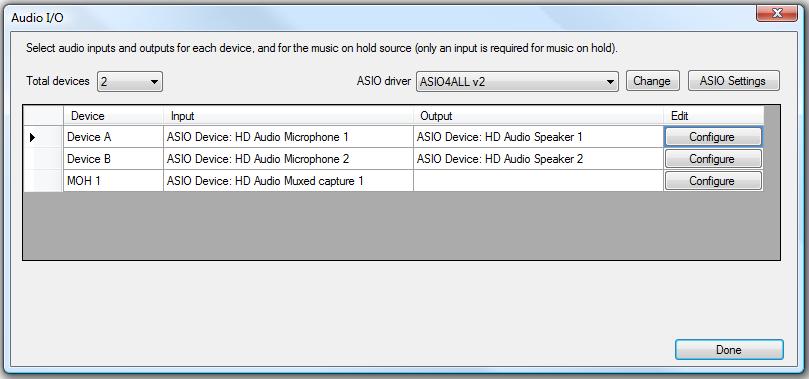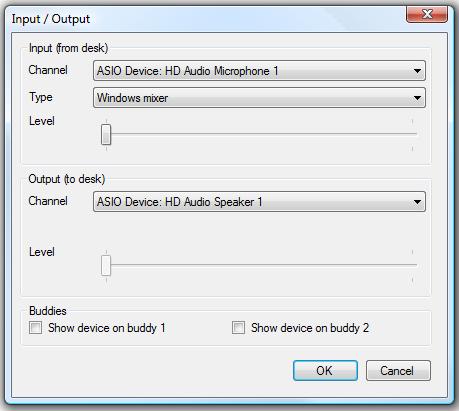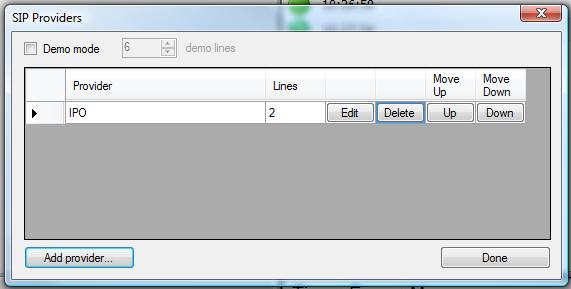Page History: Installing
Compare Page Revisions
Page Revision: Friday, 19 February 2010 10:47
Downloading the software
Once you have your hardware in place and setup correctly you are ready to download your
Solo software. To do this simply go to http://download.bionics.co.uk and log on using the details you were provided with following your purchase and you will be able to download your PhoneBOX Solo software.
Starting Solo for the first time
Now you have downloaded your software, to start Solo, simply click on the start menu icon as you would to start any other application.
The Solo software will load and, if Solo has not already been licensed, will prompt you to request a license. Click the 'Request/Download' button, enter your details to submit a license request. Following this Solo will close. Until a license has been issue it is not possible to start Solo.
Once a license has been issued, you will receive an email from support@bionics.co.uk informing you that your licence request has been approved. Upon receipt of this email you will now be able to Solo as a licensed user. Simply open Solo again and the license will be downloaded automatically.
Audio Settings
You will be prompted to set up your audio settings using the following dialogue box.

ASIO
If you wish to use ASIO devices, select an ASIO driver from the drop down list and select 'change'. To configure a selected ASIO driver, select 'ASIO settings'. This will show the selected ASIO drivers own configuration dialog. Any changes made here may require Solo to be restarted before they take effect.
Click 'Configure' for each device and you will be presented with the following to make you selections.
Configure inputs/outputs

Select your input and output channel devices from the drop down boxes and click OK. Note that if using an ASIO driver (which takes exclusive use of the selected soundcard), it is likely the inputs and outputs of the soundcard will appear in the drop down list as both as WAVE devices and ASIO devices - make sure you select the 'ASIO:xxx' device at the bottom of the list and not its equivalent WAVE device or Solo will be unable to open the input or output.
Simply repeat this process for each device and for your Music on Hold (MOH). Your MOH will only require and input channel. Should you need to edit these at a later date you can find the 'Audio Settings' dialogue box in the Tools > Admin menu Once completed click OK and you will be prompted to set up your SIP settings.
If the device should be controllable from a buddy, select 'Show device on buddy X'.
SIP Providers
Each 'provider' represents a set of lines either on a SIP gateway or SIP provider.
You can add as many 'providers' as required but are limited to a maximum total number of lines by your license.
If no providers are configured you will be prompted to set at least one up before using Solo. To make changes later go to Tools->Admin->SIP Providers

The SIP Providers dialog allows you to add and remove providers. To add a provider click the add provider button and follow the prompts on screen. Use the up and down buttons to change the order providers are displayed on the lines.
It is also possible to active 'demo' mode which simulates a SIP provider for testing and demonstration purposes. Ensure demo mode is not selected when you are ready to use Solo with real providers!
SIP settings
Display
- Lines - The number of lines available on the gateway/with the provider. This will directly control how many calls can be made and received in Solo from the provider.
- Dial priority - When clicking the dial button in Solo a provider is chosen to dial on using the dial priority. Providers with a lower number will be tried in turn until a provider is found with spare lines.
- Line label - The line label will be shown on each line for the provider. It is a good place to enter a description (e.g. XD) or the actual phone number of the line.
SIP Server
Most of the settings in this section will be specific to the SIP gateway/provider.
- Registrar/Proxy - The IP address and port of the gateway/provider.
- User @ domain - The user name and domain name required for authentication to connect to the gateway/provider.
- Auth id - (Optional) If the auth id is different to the user name for the provider/gateway specify it here.
- Password - If a password is required by the gateway/provider enter it here.
- Registration - tick register if the gateway/provider supports registration, and specify an interval that registration should occur.
- Allow direct calls - if ticked, calls to alternate SIP domains will be made directly from Solo, not via the gateway.
- Local IP address - leave set to '(auto)' except for advanced IP configurations involving firewalls and port forwarding.
NAT/Firewall
- STUN Server - Set the address of a STUN server, if known. STUN allows discovery of paths through NAT firewalls. Not usually required - set this value only if inbound calls or their audio is not received when using a SIP provider on the Internet. STUN should only be used a a last resort method of negotiating NAT and in most cases in not required.
- 'Keep alive' interval - To keep NAT translation active a keep alive can be sent on a regular basis.
Audio
- Max jitter (ms) - The maximum jitter controls the variation in interval of audio packets received over IP. If the jitter is too small glitches in audio may be heard. If the jitter is set too high, the latency of the call will be excessive.
Number rules
- Dial prefix - a number to insert in front of any dialled number, e.g. 9 for an outside line. This would then not need to be included in any dialled number within Solo. The minimum digits controls when the prefix will be applied. E.g. numbers with less than 5 digits are internal calls - don't apply the 9.
- Strip prefix - a number to strip from the front of received calls. If a gateway/provider is prefixing calls with an unrequired digit specify it here to remove it. The minimum digits controls when the prefix will be applied.
- Strip characters - any characters specified here will be removed from any number (dialled or received). E.g. enter ',-' to have commas and dashes removed from numbers if caller id is presenting numbers which contain these characters.
- Strip local area code when dialling - if the provider cannot dial local numbers when the local area code is included in the dialled number, select this option to remove the area code before passing it to the provider.
Using a handset¶
Only Linksys SPA9xx handsets are supported with this feature.
Configuring Solo
In Tools - Admin - General Settings - Handset...
Tick 'handset enabled'.
The 'auto answer' option will cause the handset to go directly to speaker phone/handset as soon as a call is answered/dialled/unheld in Solo. This is the recommended way of using a handset in Solo as otherwise the user will be required to click, for example, answer in Solo, and then the handset will ring until the user lifts it.
Handset user - The user name configured on the handset (default is 'handset').
Handset domain - The domain the handset is configured to register with (default is the name of the Solo PC). It may be necessary to use the IP address here if the handset is unable to resolve the name of the Solo PC.
Local port - The port on the Solo PC which will listen for the handset connection. Default is 5060 although this may need to be changed if 5060 is being used as a local port in the SIP Provider settings.
Configuring the handset (Linksys SPA9xx example using web based configuration tool)¶
Ext 1 settings - Proxy and registration
proxy=name or IP address of solo PC (the name of the PC may not work in this field on some network configurations in which case, the IP address should be used). Note, if the 'local port' setting has been changed in the handset configuration of Solo, this value should be entered after the proxy name in the following format: proxyname:1234
User ID=username configured on solo PC handset settings (default 'handset')
User settings
Supplementary services: Auto answer page: 'yes', preferred audio device 'speaker' or 'headset'.
Regional (advanced mode only)
To remove the triple beep which you hear when answering/unparking a call to the handset, change the 'Page Tone' to '600@-16;.3(0.0)